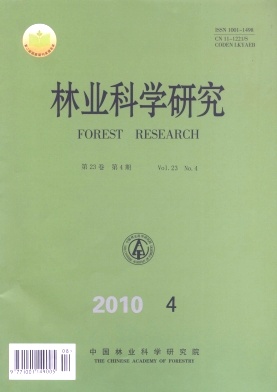|
[1]
|
Ramírez-Marcial N, González-Espinosa M,Williams-Linera G. Anthropogenic disturbance and tree diversity in Montane Rain Forests in Chiapas, Mexico [J]. Forest Ecology and Management, 2001,154 (1): 311-326 |
|
[2]
|
Cayuela L, Golicher D J, Benayas J M R, et al. Fragmentation, disturbance and tree diversity conservation in tropical montane forests[J]. Journal of Applied Ecology, 2006, 43 (6): 1172-1181 |
|
[3]
|
Cayuela L, Benayas J M R, Echeverría C. Clearance and fragmentation of tropical montane forests in the Highlands of Chiapas, Mexico[J]. Forest Ecology and Management, 2006, 226 (1-3):208-218 |
|
[4]
|
Golicher D J, Cayuela L, Alkemade J R M, et al. Applying climatically associated species pools to the modelling of compositional change in tropical montane forests[J]. Global Ecology and Biogeography, 2008, 17 (2): 262-273 |
|
[5]
|
Fletcher J D, Shipley L A, McShea W J, et al. Wildlife herbivory and rare plants: the effects of white-tailed deer, rodents, and insects on growth and survival of Turk`s cap lily[J]. Biological Conservation, 2001, 101 (2): 229-238 |
|
[6]
|
杨小林, 罗 健,鲍隆友. 濒危植物大花黄牡丹种群结构与分布格局[J]. 西南林学院学报, 2006, 26 (6): 6-9
|
|
[7]
|
周生军, 鲍隆友. 濒危植物大花黄牡丹的野生资源现状与栽培研究[J]. 中国林副特产, 2009(2): 93-94
|
|
[8]
|
邢 震, 张启翔, 次 仁. 西藏大花黄牡丹生境概况初步调查[J]. 江苏农业科学, 2007(4): 250-253
|
|
[9]
|
汪 松,解 炎. 中国物种红色名录(第一卷)[M]. 北京: 高等教育出版社, 2004
|
|
[10]
|
洪德元, 潘开玉. 芍药属牡丹组的分类历史和分类处理[J]. 植物分类学报, 1999, 37 (4): 351-368
|
|
[11]
|
李嘉珏, 陈德忠, 于 玲,等. 大花黄牡丹分类学地位的研究[J]. 植物研究,1998, 18 (2): 152-155
|
|
[12]
|
林启冰, 周志钦, 赵 宣,等. 基于Adh 基因家族序列的牡丹组(Sect. Moutan DC.) 种间关系[J]. 园艺学报, 2004, 31 (5): 627-632
|
|
[13]
|
杨小林, 王秋菊, 兰小中, 等. 濒危植物大花黄牡丹(Paeonia ludlowii)种群数量动态[J]. 生态学报, 2007,27 (3): 1242-1247
|
|
[14]
|
赵仕虎, 秦临喜,王 琳, 等. 西藏大花黄牡丹繁殖方法初步研究[J]. 中国现代中药, 2007, 11 (9):43-44
|
|
[15]
|
Jernvall J ,Fortelius M. Maintenance of trophic structure in fossil mammal communities: site occupancy and taxon resilience[J]. The American Naturalist, 2004, 164 (5): 614-623 |
|
[16]
|
Balvanera P, Pfisterer A B, Buchmann N, et al. Quantifying the evidence for biodiversity effects on ecosystem functioning and services[J]. Ecology Letters, 2006, 9 (10): 1146-1156 |
|
[17]
|
Condit R, Watts K, Bohlman S A, et al. Quantifying the deciduousness of tropical forest canopies under varying climates[J]. Journal of Vegetation Science, 2000, 11 (5): 649-658 |
|
[18]
|
King D A, Wright S J,Connell J H. The contribution of interspecific variation in maximum tree height to tropical and temperate diversity[J]. Journal of Tropical Ecology, 2006, 22 (1): 11-24 |
|
[19]
|
Blondel J. Assessing convergence at the communitywide level[J]. Trends in Ecology and Evolution, 1991,6:271-272 |
|
[20]
|
Losos J B. The evolution of convergent structure in Caribbean Anolis communities[J]. Systematic Biology, 1992, 41 (4): 403-420 |
|
[21]
|
Samuels C L, Drake J A. Divergent perspectives on community convergence[J]. Trends in Ecology and Evolution,1997,12:427-432 |





 DownLoad:
DownLoad: